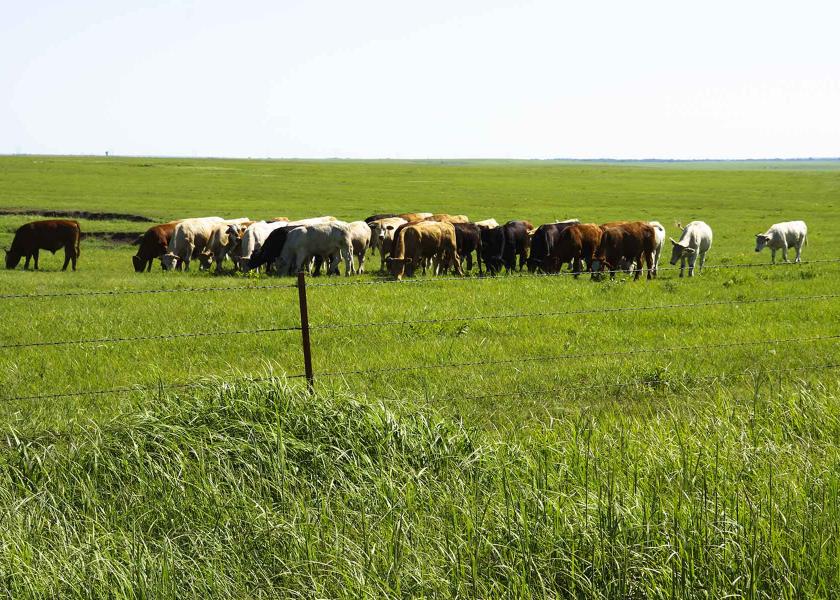Feeding Alternatives for Cattle on Native Range in Late Summer

Forage quality of native range in Oklahoma and the Southern Great Plains declines during the mid to late summer. Research conducted by Dagan Montgomery, a graduate student in the OSU Department of Animal and Food Sciences shows the dramatic decline in the protein and digestibility of native range as the summer progresses.
Performance of stocker calves on native range declines from highs of around 2 to 3 pounds per day during the spring and early summer to less than one pound per day through the late summer. Deficiency in dietary protein causes dramatic reductions in forage intake and digestibility. A small amount of high protein feed will correct the protein deficiency increasing both forage intake and forage digestibility when adequate forage is available.
In 7 experiments conducted by Oklahoma State University, it was found that feeding 1 pound per day of a high protein supplement (38 to 44% crude protein supplements based on proteins meals such as cottonseed meal or soybean meal) increased average daily gains from 1.13 pounds per day for unsupplemented steers to 1.51 pounds per day. This 0.37 pound per day increase in average daily gain required only 2.7 pounds of feed per pound of added gain.
The Oklahoma Gold Supplementation Program uses these concepts to increase performance and net returns of stocker calves grazing summer grass in the late summer. The Oklahoma Gold Program supplement should be at least 38% crude protein and contain at least 1% phosphorus (to offset mineral deficiencies in our summer grass) and contain an ionophore such as monensin or lasalocid to further increase gains by an average of 0.17 pounds per day. When an ionophore is included in the supplement efficiency improves so that only 1.8 pounds of supplement are required for each pound of added gain. This supplementation program can be fed daily (1 pound of supplement per calf), but it has been found that feeding on alternating days (2 pounds of supplement per calf each feeding) or simply 3 days per week (2.3 pounds of supplement per calf each feeding) is equally effective and may allow calves better access to supplement due to crowding and the low amount of supplement being fed.
Other research conducted by OSU graduate student, Zane Grigsby, at the USDA Southern Plains Range Research Station showed that late season performance could be increased with an extruded distiller’s grains cube (MasterHand Milling in Lexington, Nebraska) when supplemented to growing steers grazing mixed grass prairie in western Oklahoma. This supplementation program was based on the Oklahoma SuperGold Program where 2.5 pounds of supplement is fed per day (or 5.8 pounds fed per feeding 3-days per week), to increase gains by about 0.7 pounds per day. In this research, feeding 2 pounds per day (4.7 pound per feeding, 3 days per week) of this extruded distiller’s grains cube during the late summer increased gains by 0.7 (in the first year) to 1.1 (in the second year) pounds per day compared with steers that were unsupplemented during that time, requiring only 2.3 to 2.7 pounds of feed per pound of added gain. In this research mineral supplements containing ionophores were offered free-choice to all calves in a separate complete mineral mix.
Supplementation of grazing calves during the late summer can be highly profitable even in years with high input costs. There are alternatives available that do not require daily feeding. If supplements containing the mineral and ionophores are not available, feeding the mineral and supplements separately can be equally effective.
A Rancher’s Thursday Lunchtime Webinar Series presentation from July 23, 2020 by Dave Lalman and Paul Beck covers Late-Summer Supplementation to Enhance Cattle Performance. https://www.youtube.com/watch?v=ntBkXrOYEFA&t=7s







